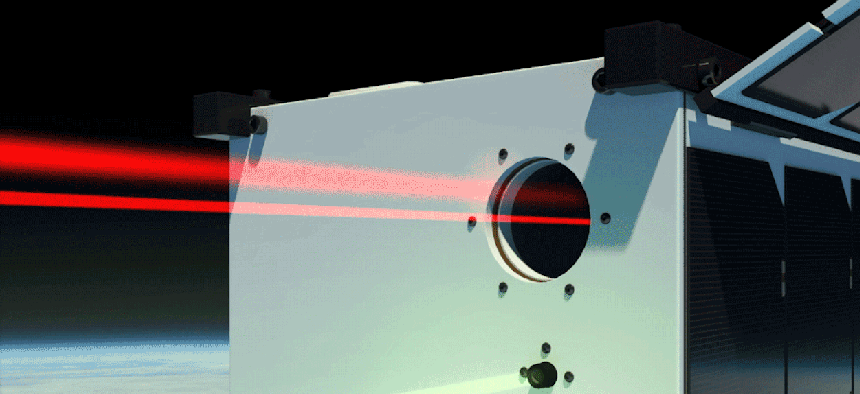BY PATRICK TUCKER
 Satellites that use lasers to exchange data promise to make military communications faster and harder to intercept — if the Pentagon can figure out how to make them work.
Satellites that use lasers to exchange data promise to make military communications faster and harder to intercept — if the Pentagon can figure out how to make them work.With plans to launch a 150-satellite constellation into low-earth orbit by September 2024, the two-year-old Space Development Agency is on a deadline. It has already released a communications standard to be used by four companies supplying the laser gear for a four-satellite experiment called tranche zero, agency director Derek Tournear said Tuesday at a Space Foundation event. And by August, Tournear expects to release a request for proposals that will spell out key details for the “more robust” standard needed for the 150-satellite tranche one.
Laser communication between satellites has been around since 2011 but figuring out how to do it at the scale and reliability needed for practical communication is a big challenge. As engineer Allan Panahi’s seminal 2010 paper on the subject explains, space-based laser communication is only possible with a very narrow beam, making it much harder than radio-frequency communication but also much more difficult for adversaries to jam or interfere with. “The requirement for much more pointing accuracy, acquisition, and tracking...and the impact that this may have on the spacecraft that is moving at 3 [kilometers per second] for [geosynchronous orbit] to 7 [kilometers per second] for [low Earth orbit] is a formidable task,” Panahi wrote.
It’s also potentially big money. SpaceX, Facebook, Google and a host of other tech companies are looking at the potential of laser-based communications.
Tournear didn’t say what companies were working on his project. He did say that he wants SDA, which has plans to launch six additional satellite layers after tranche one, to become the initial go-to market for innovations in satellite communications, at a time when funding for some satellite startups has grown shaky. “We are actually trying to create a market,” he said. “I want industry to view this as a way to develop a product that then they can sell into that market to try and win a portion of that market share. As long as we do that we’ll have a robust industry base.”
The Space Development Agency is to be folded into the U.S. Space Force by October 2022, according to the recent National Defense Authorization Act. But the law also specifies that the agency will keep authorities for contracting, classification, etc. That autonomy under the Space Force is essential if the agency is to help industry create new space-based technologies that may disrupt markets, said Tournear. That’s because the agency is essentially asking businesses to take a risk in research and develop capabilities that are somewhat outside of what they could currently sell to established clients. The agency becomes the only market, at least at first, and if they disappear into a larger structure, those companies won’t see the same incentives for taking those risks.
“If you fold in too quickly, before you are able to demonstrate the value of the disruption, it may go away. What I will say is, in NDAA 21, the language in law is actually very good at trying to protect that from occurring.”
No comments:
Post a Comment